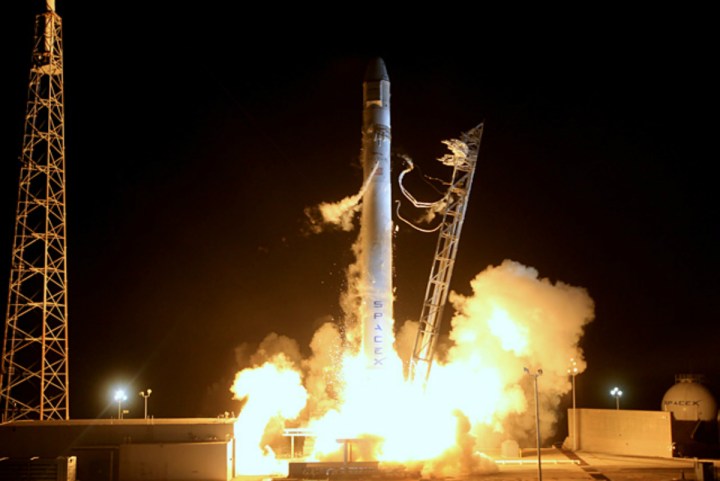
Celebrity entrepreneur Elon Musk founded SpaceX in 2002 with one not so simple mission: Establishing a human foothold on Mars. Given the dire state of NASA funding, Musk believed that people needed to see life reach Mars in order to get excited about the idea. After looking into the price of buying a rocket for his mission, Musk realized that the hurdle wasn’t willpower, but cost. As he explained to Wired, “The real reason we weren’t going to Mars wasn’t a lack of national will; it was that we didn’t have cheap enough rocket technology to get there on a reasonable budget. It was the perception among the American people — correct, given current technology — that it didn’t make financial sense to go.”
To that end, SpaceX has been focused on developing rockets that are just as functional, yet far cheaper. SpaceX has crossed a number of milestones since its founding, and while not all of them were impressive, the failures are as important as successes in any endeavor, especially when that endeavor is getting humanity to Mars. Here are some of the biggest milestones in SpaceX’s history.
Falcon 1 reaches space
September 2008
The Falcon 1 got off to an inauspicious start. The first flight attempt only lasted about a minute, and the next two also fell short (to be fair, it is rocket science). On the fourth try, the Falcon 1 successfully reached orbit, becoming “the first privately developed liquid fuel rocket to reach Earth orbit,” according to SpaceX.
Dragon Returns
December 2010
SpaceX isn’t just about rockets. Its fearsomely named Dragon spacecraft is a capsule built to carry people and supplies to the International Space Station. In 2010, SpaceX launched Dragon into orbit onboard a Falcon 9 rocket (the Falcon 1’s bigger, more powerful sibling). While reaching space is impressive on its own, the Dragon made history when it returned to earth, splashing down in the Pacific Ocean about 500 miles off the coast of Mexico in what must have been an impressive cannonball. It was the first time a private spacecraft returned from orbit.
Dragon reaches the International Space Station
May 2012

In yet another first, SpaceX built the first private spacecraft to dock with the International Space Station. More than a year after the Dragon’s successful landing in the Pacific, SpaceX sent it to the ISS. After a lengthy approach — the Dragon launched on May 22, then spent days maneuvering and sending data back to SpaceX — astronauts aboard the ISS used a robotic arm to pull the capsule to a docking port.
Falcon 9 sticks the landing
December 2015

After unsuccessful attempts, SpaceX finally managed to land its Falcon 9 rocket, on the ground no less. Landing successfully was crucial to SpaceX’s plans for cheap rockets; one of the biggest expenses with spacecraft in the past was that they weren’t really reusable, and that is a huge barrier to extraterrestrial ambitions. As Musk explained to Wired, “It’s the fundamental thing that’s necessary for humanity to become a space-faring civilization. America would never have been colonized if ships weren’t reusable.”
The vertical landing wasn’t just a first for SpaceX, but an important step in rocketry. “No one has ever brought a booster, an orbital-class booster, back intact,” according to Musk.
First droneship landing
April 2016

Once you’ve landed a rocket on land, where can you go from there? How about landing a rocket on a small platform floating in the ocean? That’s just what SpaceX managed in 2016, finally landing on a droneship after several crashes. Landing on a relatively small object out in the ocean is impressive — seems like the folks at SpaceX might be fearsome Cricket players — and important for future missions, as it is more cost effective to try and land in the ocean than on land.
SpaceX reuses a rocket for the first time ever
March 2017

Landing a rocket intact is only one part of reusability; you also have to be able to get it back up into space, a feat SpaceX accomplished in 2017. Having successfully landed numerous rockets, SpaceX put its second successfully-landed rocket back on the launch pad. SpaceX launched the rocket and landed it on a droneship in the Atlantic Ocean.
The Dragon flies again
June 2017

Having proven that it could use Falcon 9 rockets multiple times, SpaceX set out to demonstrate the same reusability with the Dragon. On June 3, 2017, the company used a Falcon 9 rocket to launch a previously used Dragon spacecraft back into orbit. It was the company’s eleventh mission to bring supplies to the ISS, and the Dragon in question was previously used in the fourth such mission. After reaching orbit, Dragon separated from the rocket, continuing on its own toward the space station. The success of the mission means that the capsules — which can transport not just supplies but people, too — can be used repeatedly, paving the way for humans to make trips to and from other planets.
Editors' Recommendations
- Watch SpaceX practice an emergency escape from its Crew Dragon capsule
- How to watch the SpaceX Dragon spacecraft depart the ISS today
- SpaceX selected to deliver cargo to NASA’s Lunar Gateway space station
- SpaceX and NASA still set for historic May mission despite coronavirus
- Today’s SpaceX Starlink launch was aborted due to engine power issue




